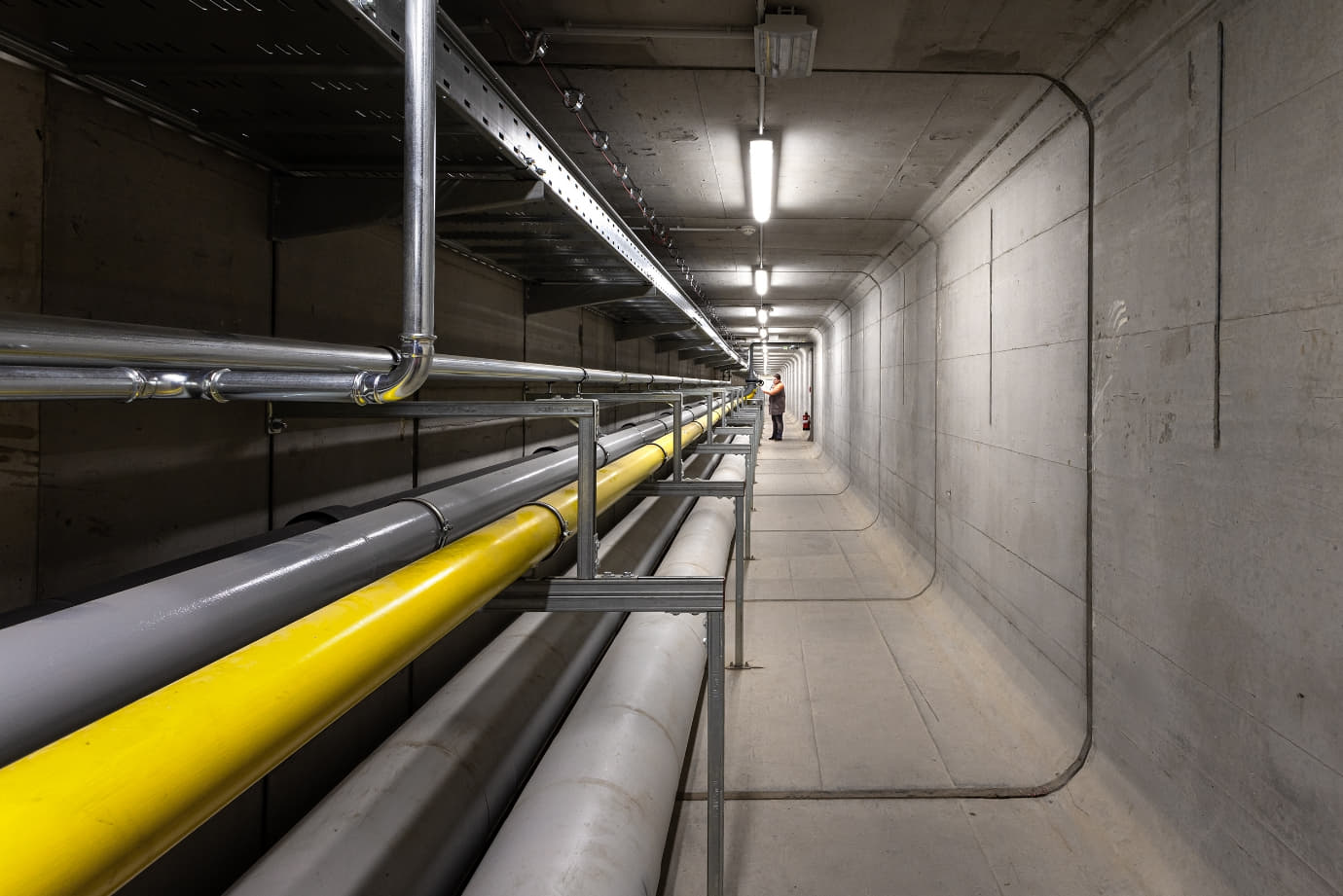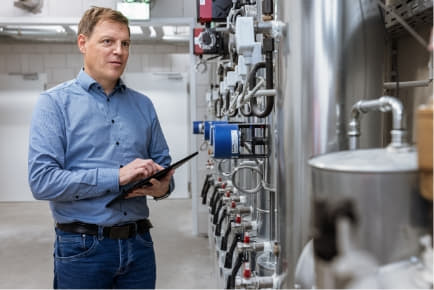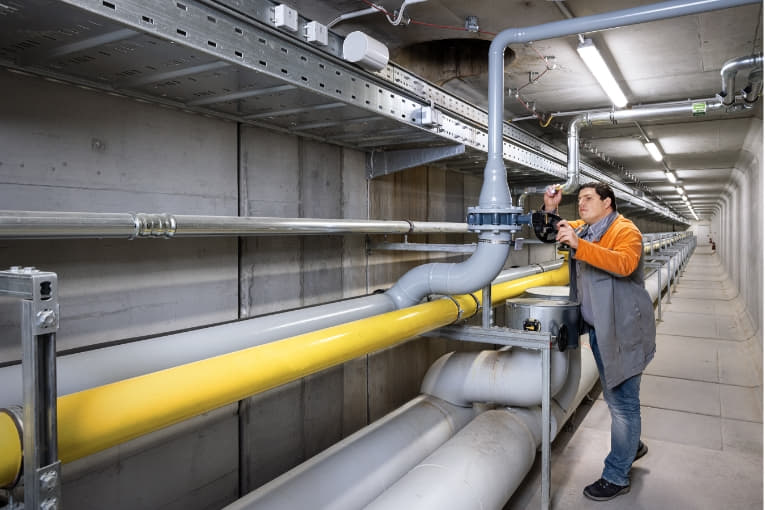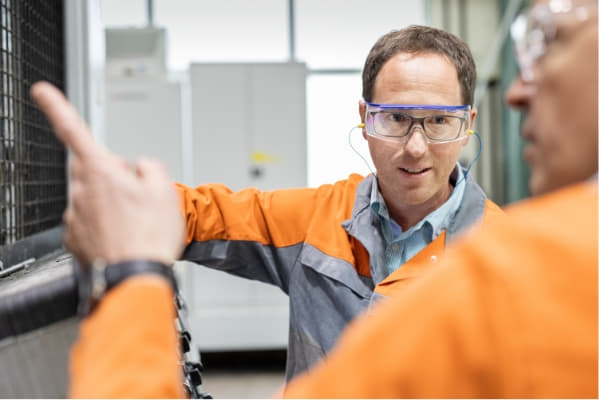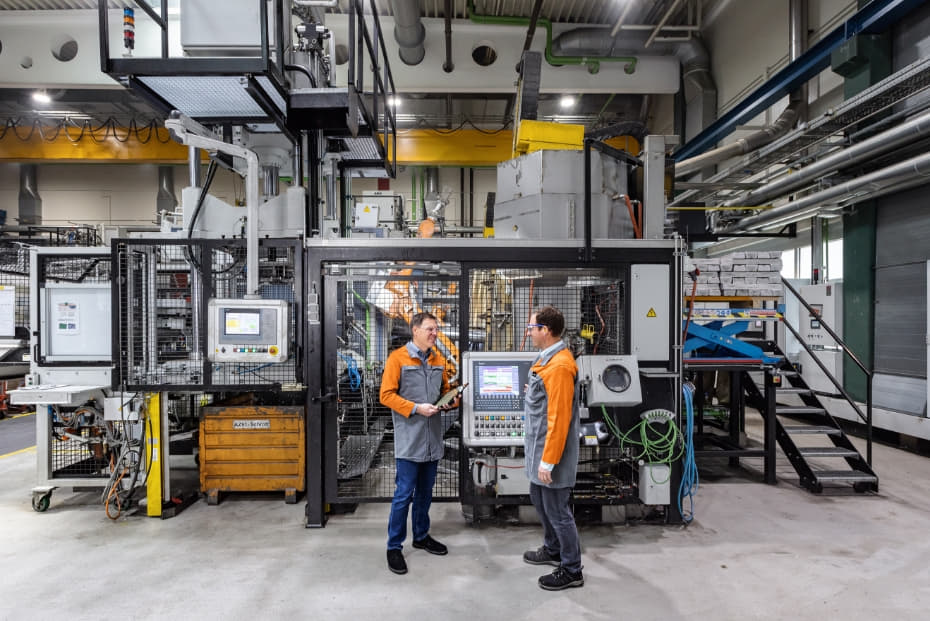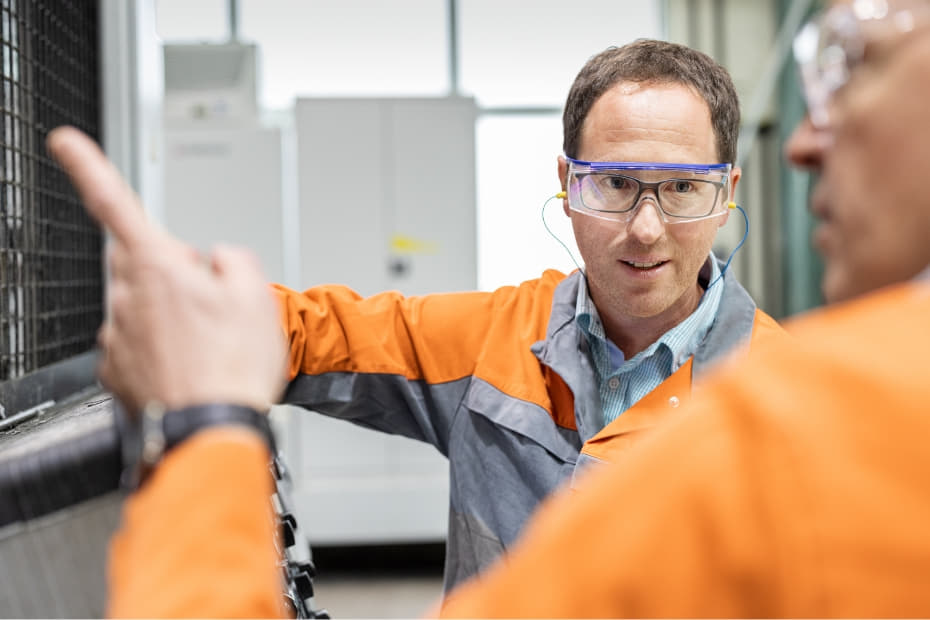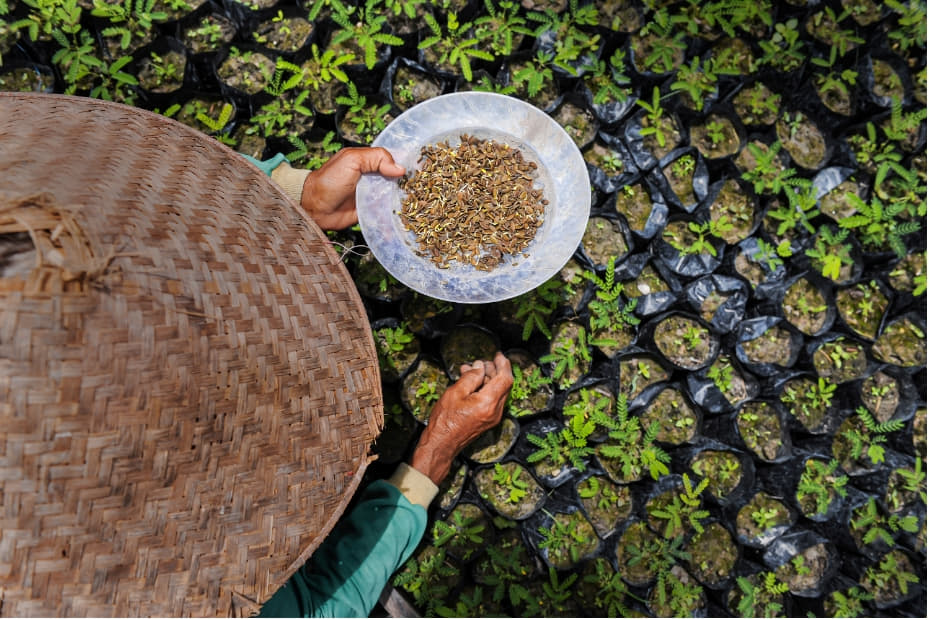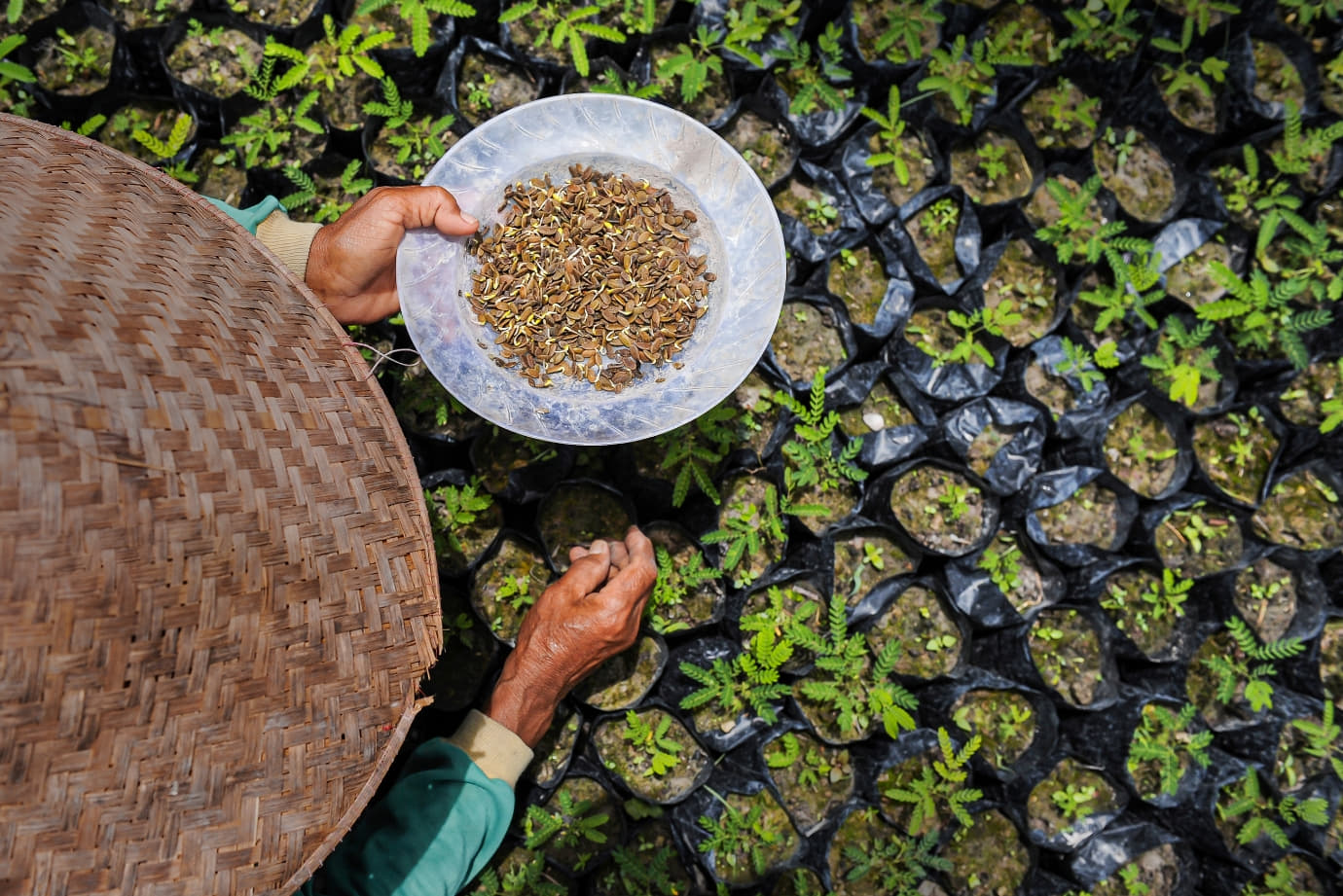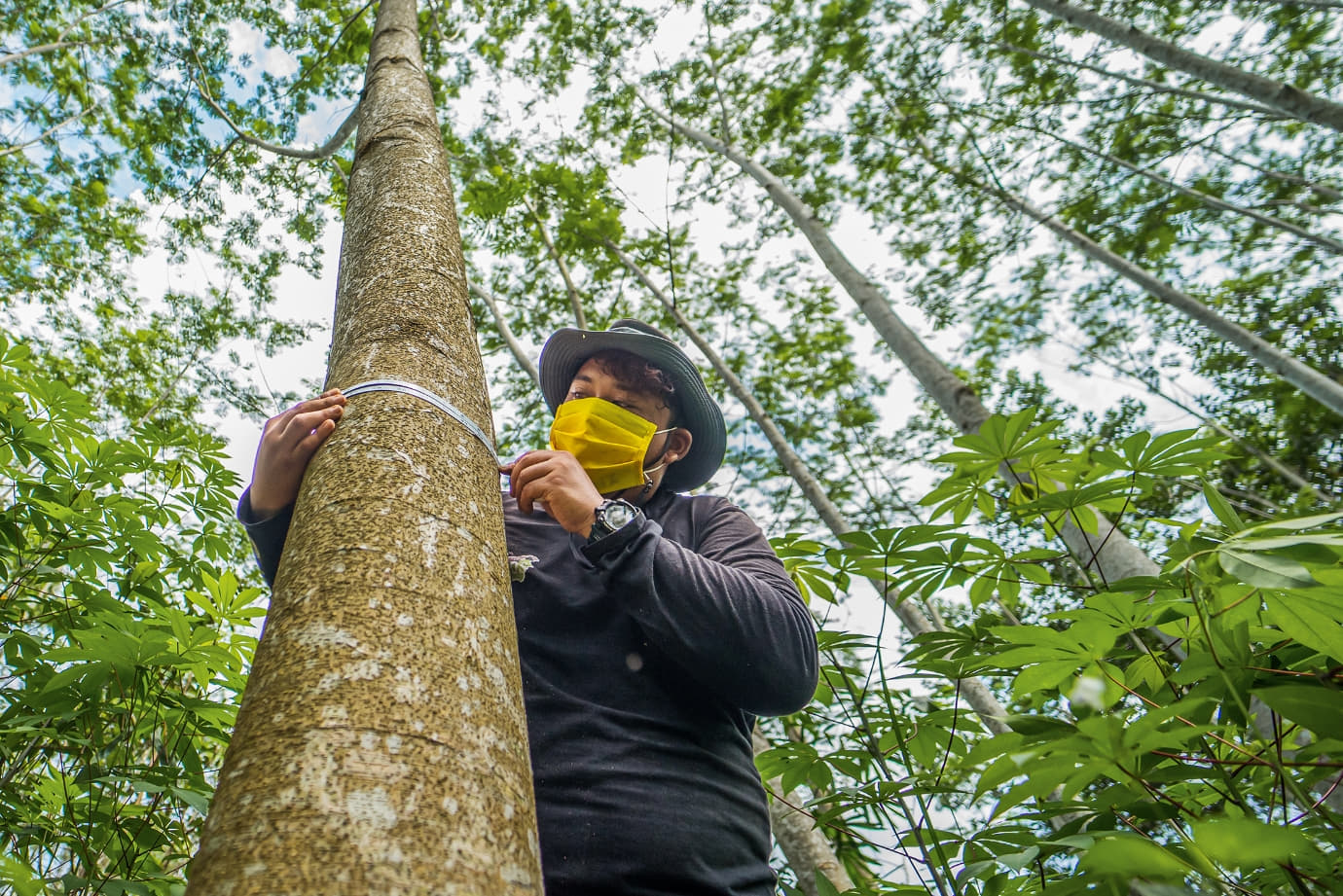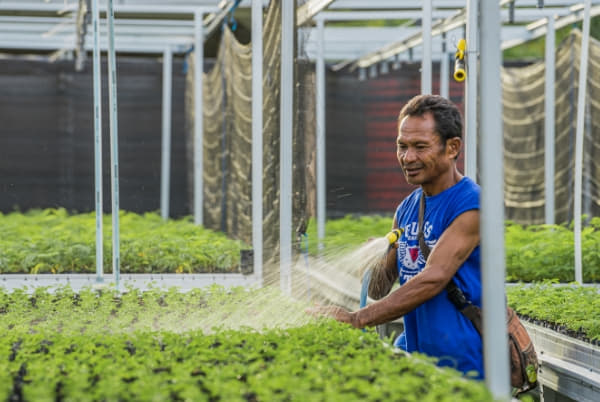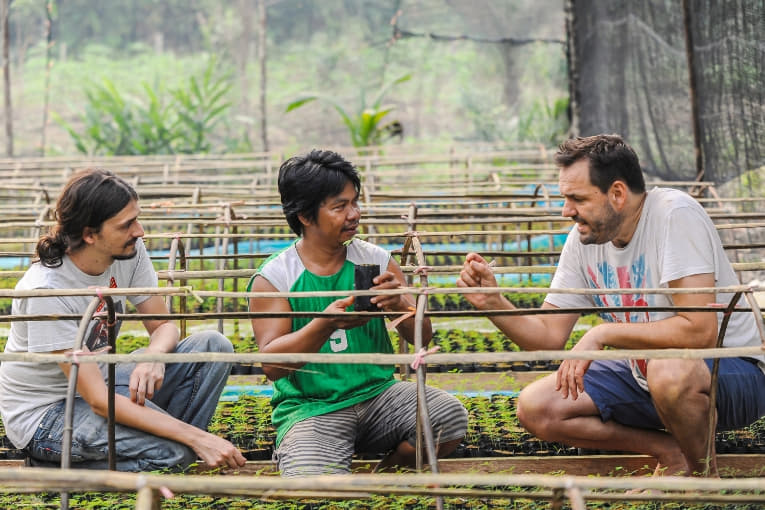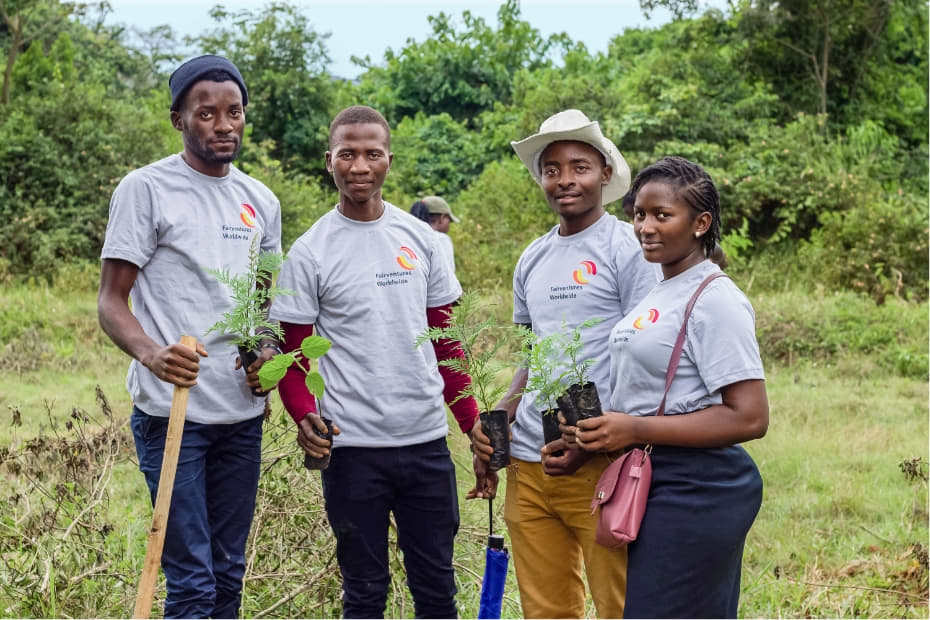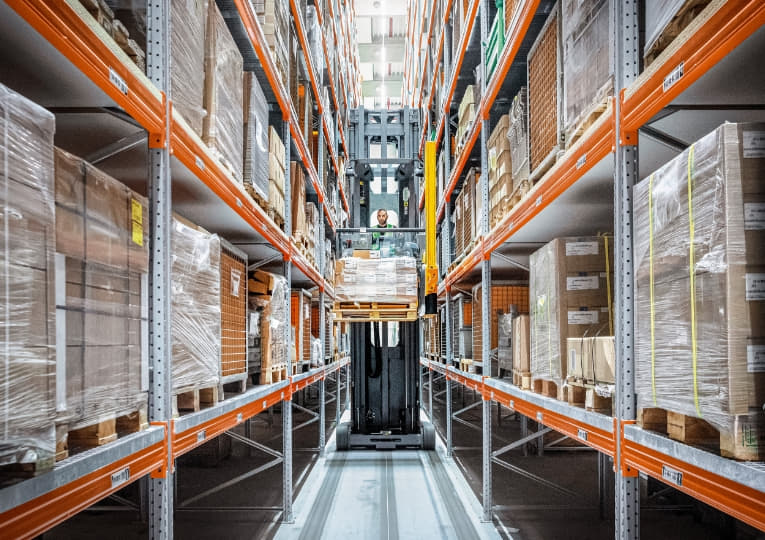Committed to the environment
As a manufacturer of chainsaws and outdoor power equipment, STIHL maintains a special relationship with the environment. We remain true to our roots and are dedicated to protecting nature and the climate within our Scope of influence. Our aim is to keep the environmental impact of our activities and products to a minimum while conserving resources.


As a business that manufactures and sells products globally, STIHL is subject to a host of environmental protection regulations. We are committed to complying with those statutory requirements, including the European Regulation on Registration, Evaluation, Authorisation and Restriction of Chemicals (REACH) and the EU’s Restriction of Hazardous Substances Directive (RoHS). Our internal environmental and quality standards often go beyond the rules set by legislators. We keep the use of hazardous substances to an absolute minimum. Where their use is necessary, we act with tremendous care, comply with legal guidelines, and make every effort to minimize the impact on the environment.
In keeping with our mission to go above and beyond the applicable legal requirements, we plan to draw up an inventory of all critical process chemicals in 2022. By 2025, we will develop an action plan that aims to reduce the use of hazardous process chemicals such as biocides (which can be found in cooling oils and process water) in our own processes and in our supply chain. Doing so will enable us to make a contribution to the United Nations target of achieving environmentally sound management of chemicals (SDG 12).
All of our production companies worldwide have a certified environmental management system in line with ISO 14001, with all of our German locations having already undergone EMAS evaluation starting in the 1990s. Production companies are subject to ISO 14001 recertification every three years. External audits are conducted every year, and internal audits take place on a regular basis. The German locations were most recently recertified in 2021. Their current certification will remain valid until 2024. Every production plant has a local environmental officer who is responsible for compliance with legal requirements, standards, and guidelines.
Water and effluents
Water is required in manufacturing for cleaning and cooling and for other processing stages. We make every effort to optimize the use of all resources. During some of our manufacturing processes, water is mixed with chemicals to act as a cleaning agent or to finish surfaces. The resulting effluents are treated in accordance with the latest regulatory requirements before being released into public wastewater collection systems. At the STIHL plant in São Leopoldo, Brazil, for example, industrial wastewater undergoes treatment in the facility’s own chemical and physical wastewater treatment system. Installing the system has made it possible to significantly reduce the amount of chemicals needed to treat water. Effluents are collected and treated, allowing them to be reused several times within the process chain, thereby minimizing the total quantity of water required.
In 2021, production companies Group-wide extracted a total of around 630,000 cubic meters of water (previous year: 568,000 cubic meters).
We plan to further enhance our reporting of water-use data in the future.
Waste
The main types of waste generated at STIHL are packaging, wood, metal, and plastics. Hazardous waste, such as used oil or slurry containing metals, is generated to a lesser extent. All hazardous waste is disposed of properly. The waste hierarchy under our waste management strategy consists of prevention, recycling, and disposal. Once generated, waste is sorted, reused or recycled (if possible), or properly disposed of. STIHL employees regularly receive information about waste through various channels and undergo awareness training. The founding company in Waiblingen, for example, introduced an improved waste-separation concept at its offices in 2021.
Waste1
in metric tons – values rounded
| 2021 | 2020 |
|---|
| | | |
| Total waste volume | 56,200 | 49,000 |
|---|
| Of which hazardous waste | 7,300 | 7,900 |
|---|
1 Production companies only; data collection to be expanded in the future.
Waste by material
(previous year in parentheses)
Energy and climate change mitigation
We intend to take an active approach to climate change mitigation and support the target defined in the Paris Agreement of limiting global warming to no more than 1.5 degrees Celsius. In 2020, we set the goal of becoming a climate-neutral business in the long term. That is why we have adapted our climate targets to match those stated in the Paris Agreement. Our climate change mitigation activities are our contribution to the United Nations Sustainable Development Goal “Climate action” (SDG 13).
Our initial focus is on reducing energy consumption within our value chain, which we can influence directly. This includes direct Scope 1 emissions under the Greenhouse Gas (GHG) Protocol. At the STIHL Group, such emissions result primarily from the combustion of gas and oil to heat buildings and during manufacturing processes, assembly, and development. They are also attributable to fuel for the vehicle fleet and coolant losses during business operations. We also take indirect Scope 2 emissions (from electricity and district heating) into consideration (see “The path to climate neutrality”).
In Germany, our locations (the founding company and its eight plants, STIHL direct GmbH, STIHL Digital GmbH, SDP Digitale Produkte GmbH, STIHL International GmbH, and the distribution center in Dieburg) have been climate-neutral thanks to offsetting of Scope 1 and 2 emissions since January 2021. The international production companies are set to follow in 2022. From 2023 on, the international sales companies will also achieve climate neutrality through carbon offsetting (Scope 1 and 2). As a result, we will achieve our target well ahead of the original deadline of 2028.
From plastic to cardboard – rethinking packaging
In 2021, we launched a project to take a critical look at our packaging. The packaging used for brushcutter mowing heads was converted from largely plastic to entirely cardboard in an initial pilot project, helping reduce the use of plastic, simplify transport, and make the overall process more resource-efficient. Our customers also benefit from packaging that is easier to open and close. We plan to continue exploring further options for environmentally friendly packaging in 2022 by setting concrete targets for reducing plastic packaging and the use of resources in existing packaging. Doing so will allow us to make a contribution toward substantially reducing waste generation, a target under the United Nations Sustainable Development Goal “Sustainable consumption and production” (SDG 12).
Emissions occurring in the upstream and downstream value chain (Scope 3) are not something we can influence alone. Here too, however, we are pursuing the lofty goal of bringing these emissions into line with the targets of the Paris Agreement and the national targets in Germany. Including both our suppliers and our products in our plans will be essential. We will also identify specific potential for reduction and define targets for Scope 3 emissions in 2022. The lion’s share of Scope 3 emissions is attributable to the use phase of our products. We have already calculated product carbon footprints (PCFs) for initial product groups to serve as an example. The calculation involves determining the environmental footprint in CO2 equivalents in every life-cycle phase.
As in the transportation sector, the use phase accounts for an average of 60 to 90 percent of our product portfolio’s emissions. Battery-operated products tend to lie on the lower end of that scale, depending on the local electricity mix. We will gradually build up our data set, with the findings to be included in a product development decision matrix going forward.
We plan to have our climate targets reviewed in 2022 as part of our efforts to join the Science Based Targets initiative (SBTi), which will give them a scientific foundation. In 2022, we also intend to analyze the impact of climate change on our business model and our Group member companies.
Illustrative CO2E Footprint comparison in various life-cycle phases for gasoline-powered and battery-operated products
indexed at 100, not brand or product-specific
The path to climate neutrality
We will focus on the following pillars in our mission to achieve climate neutrality (Scope 1 and 2):
1) Energy efficiency
We are committed to a 40 percent increase in energy efficiency by 2030, as compared to 2019. In 2019, our energy intensity per 1 million euros in revenue stood at 197.8 MWh. In 2021, that same figure stood at 188.0 MWh. We are currently putting together a catalog of measures to help us achieve our goal. Against this backdrop, detailed analyses were conducted at our plants in 2021, with efforts being made to identify appropriate potential for savings. These analyses are now being evaluated to draw up master plans for buildings and systems. Initial individual measures are being planned and taken at various plants on the basis of the insights gained during analysis. The focus is on rolling out new technologies, for instance one allowing optimized use and distribution of process heat.
2) Energy generation
STIHL will systematically expand the localized, in-house generation of energy from renewable sources through technologies such as solar arrays.
3) Renewable sources of electricity
In countries in which renewably sourced electricity is available through public power grids, we will purchase renewably generated electrical energy to power STIHL’s operations. At our German locations, we have exclusively purchased ok-power-certified green electricity since January 2021, allowing us to cut our energy-related greenhouse gas emissions in Germany roughly in half. In 2022, production companies worldwide will also be making the switch to electricity from renewable sources. The ZAMA production sites in the Philippines, China, and Hong Kong will be converting to renewable sources of electricity at a later date due to existing contracts and a lack of availability.
4) Carbon offsetting
In general, we believe in the principle that reducing emissions comes before offsetting them. Currently unavoidable emissions are offset through carbon credits. Because we value internationally recognized, high-quality, and independent certification standards, those credits come exclusively from gold-standard, certified climate protection projects. Alongside climate change mitigation, we also care about further sustainable development goals that we are prioritizing as part of our sustainability strategy, including decent work for all (SDG 8) and sustainable consumption and production patterns (SDG 12). In 2021, we offset roughly 19,800 metric tons of CO2 emissions, providing support to a climate protection project in the Rwandan district of Gatsibo (Africa). The project funds the building of drinking water wells, along with the introduction of efficient cooking stoves, and makes an important contribution to protecting the environment, improving the health of the local population, and maintaining biodiversity.
Going forward, we will promote the advancement of ways of storing CO2 rather than offsetting it. To this end, we reviewed an initial project in 2021 that is scheduled to begin in 2022 in cooperation with Fairventures and will allow us to start gathering experience in this field.
Energy consumption and emissions
Our production networks in Germany maintain an ISO 50001-certified energy management system. Today, efficiency measures are already helping us consistently save energy and costs.
The lion’s share of our energy consumption and greenhouse gas emissions is attributable to electricity consumption (Scope 2 under the GHG Protocol), which is primarily needed for production processes. A significant proportion of energy consumption and emissions (Scope 1) originates in the use of natural gas to heat buildings. Of the total energy consumption (Scope 1 and 2) of roughly 514 GWh in 2021 (previous year: 456 GWh), approximately 65 percent was attributable to electricity, with around 32 percent relating to natural gas. The nearly 13 percent rise in energy consumption in the reporting year resulted from an increase in production volume. Energy intensity (per 1 million euros in revenue) increased by a significantly smaller margin in 2021 to stand at 188.0 MWh (previous year: 179.6 MWh).
The switch to renewable sources of electricity in Germany raised the proportion of electricity from renewable sources as a percentage of total electricity needs to around 48 percent in 2021 (previous year: 23 percent). The STIHL companies in Austria and Brazil have been meeting their individual electricity needs from renewable sources for some time now. As a result, the CO2 emissions from electricity consumption fell to 55,060 metric tons in 2021 (previous year: 66,450 metric tons), which made a substantial contribution to reducing overall CO2 emissions by 6.8 percent.
Energy consumption1
in GWh – values rounded
| 2021 | 2020 | 2019 |
|---|
| | | | |
| Natural gas | 160 | 141 | 133 |
|---|
| Heating oil | 5.8 | 4.5 | 3.4 |
|---|
| Fuel2 | 12.5 | 12.1 | 13.4 |
|---|
Renewable Energy
(geothermal heating and cooling) | 1.3 | 2.5 | 0.4 |
|---|
| Total direct energy consumption | 179.6 | 160.1 | 150.2 |
|---|
| Electricity | 332 | 294 | 279 |
|---|
Of which
from renewable sources | 160 | 67 | 67 |
|---|
| District heating | 2.4 | 2.1 | 1.1 |
|---|
Total indirect
energy consumption | 334.4 | 296.1 | 280.1 |
|---|
| Total energy consumption | 514.0 | 456.2 | 430.3 |
|---|
Energy intensity1
in MWh per 1 million euros in revenue
In line with energy consumption, emissions of CO2 equivalents at German STIHL locations and at international production companies in 2021 stood at 93,840 metric tons in total (Scope 1 and 2 under the GHG Protocol, previous year: 100,740 metric tons). Of that amount, roughly 19,800 metric tons were offset.
Greenhouse gas emissions1
in metric tons CO2E – values rounded
| 2021 | 2020 | 2019 |
|---|
| | | | |
| Natural gas emissions | 32,570 | 28,680 | 27,210 |
|---|
| Heating oil emissions | 1,510 | 1,180 | 900 |
|---|
| Fuel emissions | 3,300 | 3,340 | 3,720 |
|---|
| Coolant emissions | 1,310 | 790 | 1,860 |
|---|
Total direct emissions
(Scope 1) | 38,690 | 34,170 | 33,690 |
|---|
| Electricity emissions | 55,060 | 66,450 | 58,690 |
|---|
| District heating emissions | 90 | 120 | 60 |
|---|
Total indirect emissions
(Scope 2) | 55,150 | 66,570 | 58,750 |
|---|
Total emissions
(Scope 1 and 2) | 93,840 | 100,740 | 92,840 |
|---|
| Of which offset | 19,8002 | 0 | 0 |
|---|
1 Including STIHL direct GmbH, STIHL Digital GmbH, SDP Digitale Produkte GmbH, and STIHL International GmbH, which are based at the founding company’s headquarters.
Not including the ZAMA companies in Japan and the U.S., which are not production companies.
2 STIHL Germany: founding company and Dieburg distribution center.
Emissions and emission intensity are presented using the market-based approach. The calculation takes into account hazardous greenhouse gases under the GHG Protocol, which mainly consist of CO2 emissions. Although STIHL only generates negligible volumes of other greenhouse gases, such as coolants, such emissions are included for the sake of completeness.
Emission intensity1
Scope 1 and 2 in metric tons CO2 per 1 million euros in revenue, without offsetting – value rounded
